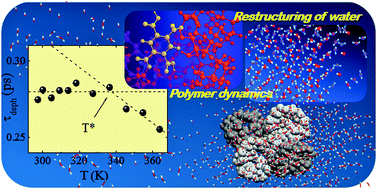Toward an understanding of the thermosensitive behaviour of pH-responsive hydrogels based on cyclodextrins
Abstract
The molecular mechanism responsible for the thermosensitive behaviour exhibited by pH-responsive cyclodextrin-based hydrogels is explored here with the twofold aim of clarifying some basic aspects of H-bond interactions in hydrogel phases and contributing to a future engineering of cyclodextrin hydrogels for targeted delivery and release of bioactive agents. The degree of H-bond association of water molecules entrapped in the gel network and the extent of intermolecular interactions involving the hydrophobic/hydrophilic moieties of the polymer matrix are probed by UV Raman and IR experiments, in order to address the question of how these different and complementary aspects combine to determine the pH-dependent thermal activation exhibited by these hydrogels. Complementary vibrational spectroscopies are conveniently employed in this study with the aim of safely disentangling the spectral response arising from the two main components of the hydrogel systems, i.e. the polymer matrix and water solvent. The experimental evidence suggests that the dominant effects in the mechanism of solvation of cyclodextrin-based hydrogels are due to the changes occurring, upon increasing of temperature, in the hydrophobicity character of specific chemical moieties of the polymer, as triggered by pH variations. The achievements of this work corroborate the potentiality of the UV Raman scattering technique, in combination with more conventional IR experiments, to provide a “molecular view” of complex macroscopic phenomena exhibited in hydrogel phases.


 Please wait while we load your content...
Please wait while we load your content...